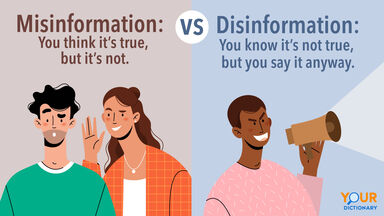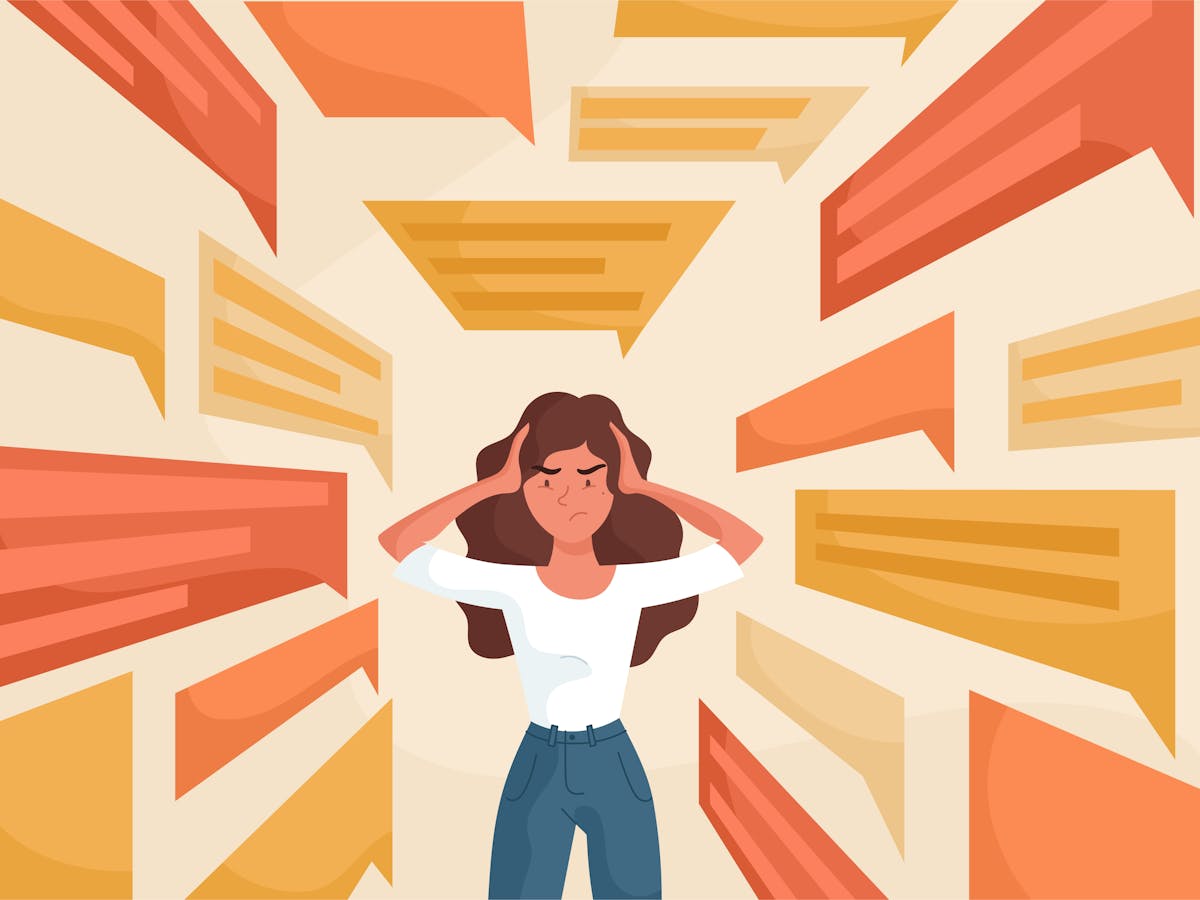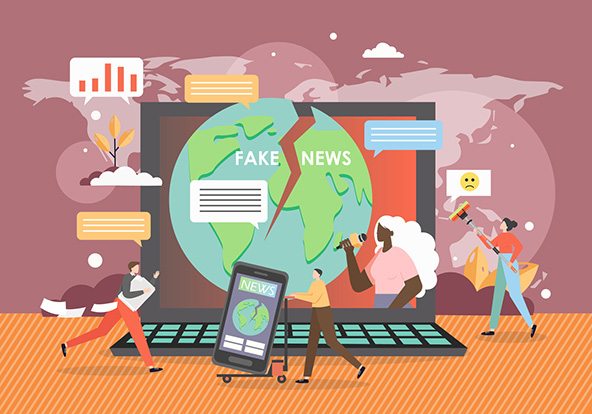Fact or Fake?
Misinformation
Misinformation is false or inaccurate information that is spread, regardless of the intent to mislead. This happens every day in our lives because we are humans, and we all make mistakes. Misinformation can happen when we spread false news before checking the facts. This often occurs in this day and age due to how easy it is to share media with just the click of a button. The media is a breeding ground for misinformation, from just sharing the wrong time for an event that you thought was correct to sharing a video on a politician that contained false content.We unintentionally share misinformation all of the time with no harmful or malicious intent.Disinformation
Disinformation is deliberate and includes malicious content such as hoaxes, Conspiracy theories, fake news, spear phishing, frauds, photoshops, and propaganda. It spreads fear and suspicion among the population. It is weaponized misinformation and can be powerful, destructive, and divisive.It was and is commonly used for espionage or spying on other countries. Countries would intentionally spread fake information to their rival nations. For example, during the Cold War, the USA and Soviet Union would spread disinformation. When a country or group coordinates these complicated plans of spreading disinformation, it is often referred to as a disinformation campaign. Propaganda is also often used to spread information to make someone or something look bad or good. It can be used to polarize opinions and promote violent extremism. Disinformation is very dangerous for Journalists who could be sued for Libel if they wrongfully accuse some of being a liar or spreading disinformation.
Types of Mis/Disinformation
There are many different types of Misinformation and Disinformation. Fabricated content is completely false content. Manipulated content is genuine information or imagery that has been distorted, also known as ‘clickbait.’ Imposter content is when someone impersonates a genuine source, such as using the branding of an established agency and impersonating them to scam users. Misleading content is when misleading information is presented as a fact. False context is factually accurate content combined with false contextual information. Satire and parody are when humorous, but false stories are passed off as true. There is no intention to harm, but readers may be fooled. False connections are when headlines, visuals, or captions do not support the content. Sponsored content is advertising or PR disguised as editorial content. Propaganda is content used to manage attitudes, values, and knowledge. Finally, an Error is a mistake made by established new agencies in their reporting.
Manipulators
Manipulators are basically gas-lighters to the misinformation or disinformation given. They further the extremity of the fake news by falsely supporting or contradicting topics.
One type of manipulator is a Sock-puppet. A sock puppet is an online identity used to deceive. Misleading uses of online identities to praise, defend or support a person or organization; to manipulate public opinion; or to circumvent restrictions, suspension, or an outright ban from a website. Another is Sea-lioning. This is a type of trolling or harassment where people are pursued with persistent requests for evidence or repeated questions. A pretense of civility and sincerity is maintained with these incessant, bad-faith invitations to debate. Then there is astroturfing which masks the sponsors of a message (e.g., political, religious, advertising, or PR organizations) to make it appear as though it comes from grassroots participants. Finally, there is catfishing which is fraud where a person creates a fake identity to target a particular victim on Social Media. It is common for romance scams on dating websites. It may be done for financial gain, compromising a victim, or as a form of trolling or wish fulfillment.How this affects society
The rise of Artificial Intelligence has made it easier to spread false information. Media is one of the main ways that people consume news and information. This is so dangerous for my generation because we can be easily swayed and gullible to fake news. Misinformation and disinformation are used to influence political views and can manipulate opinions. The algorithm in artificial intelligence can send you down a spiral of related content and close you off from seeing outside topics that would contradict what you originally clicked on. It closes you off and can get you on an extreme side of opinions.
Certain demographics can be targeted and harassed. Communities, often minority groups, will receive backlash from false news and information spread about them. It can be dangerous for these communities, and that is why it is so important to fact-check sources before you share and spread false information.
Overall, disinformation and misinformation can be extremely dangerous, and it is our duty as citizens to combat this false information by fact-checking our sources and their credibility.






No comments:
Post a Comment